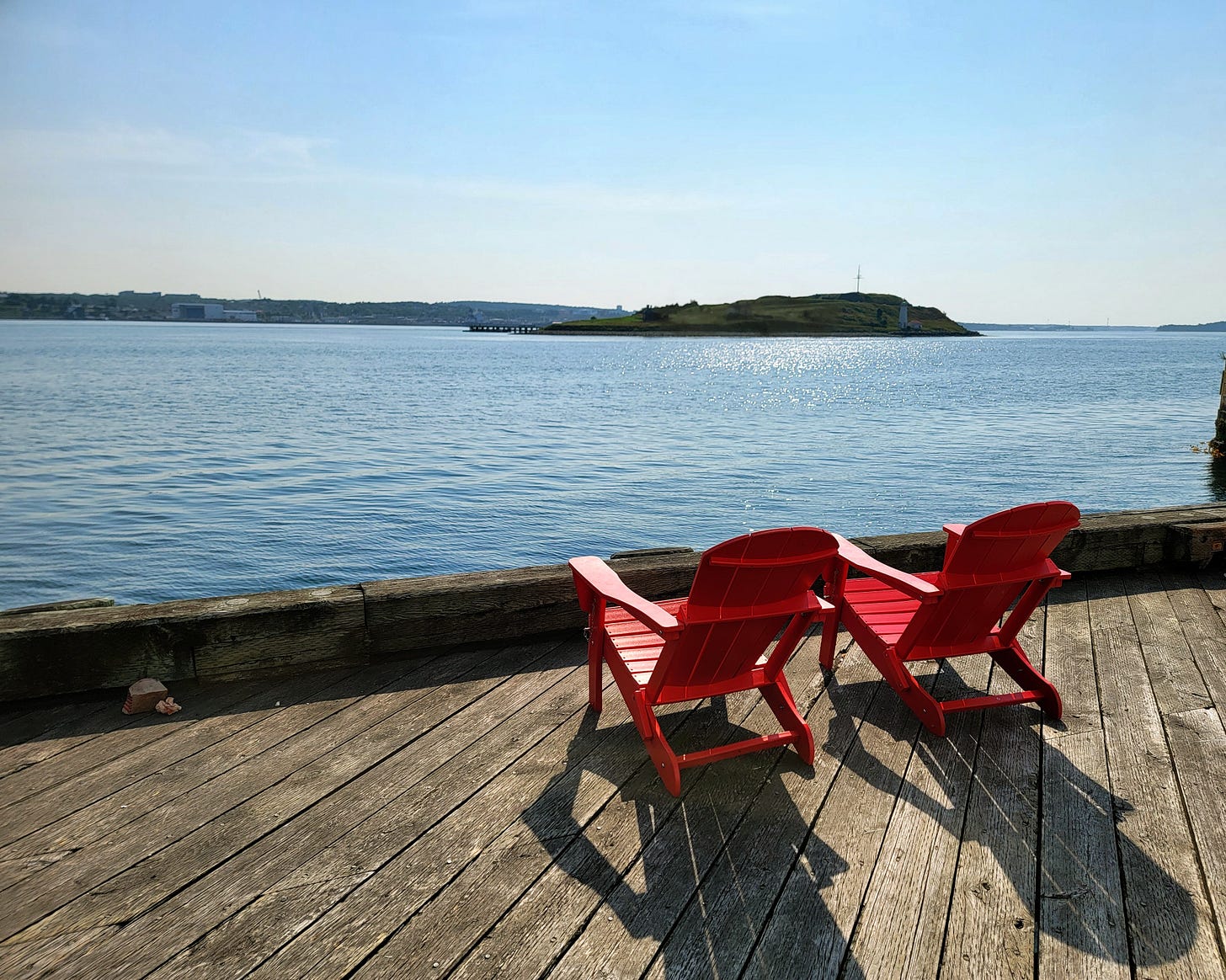Halifax, Nova Scotia has the familiar feel of a small, American city, except clean and well-mannered.
We arrived by cruise ship, the Norwegian Star (see my review here). The terminal and wide boardwalk along the harbor is populated with breweries, coffee shops, food trucks, and gift shops. There are red Adirondack chairs lining the waterside with stunning views of the lighthouse and keeper’s cottages on George’s Island just a short ferry ride away.

There’s much more than that to see, though.
SEE
The route I trod was about four miles when you add putzing around the fort and walking the paths in the garden. It would be very easy to add a stop in the Natural History Museum, Maritime Museum, and a visit to the WWII ship HMS Sackville as well.
If you don’t want to walk, there are taxis and Ubers aplenty, and bike rentals around the boardwalk. If you don’t want to see anything but the harbor, you can rent a kayak at the waterfront, too, and have a paddle around.
Halifax Public Gardens
The Victorian-era gardens encompass 16 acres of the city. Enter through the wrought-iron gates and follow the axially symmetric layout of annual beds, water features, a bandstand and a pavilion for snacks and drinks.
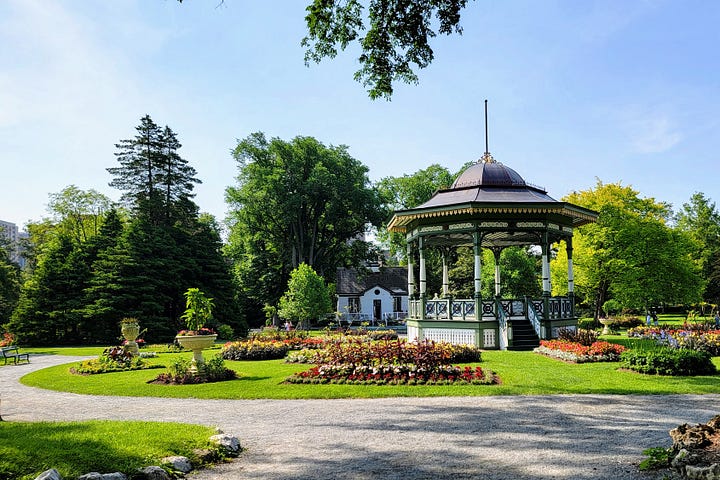
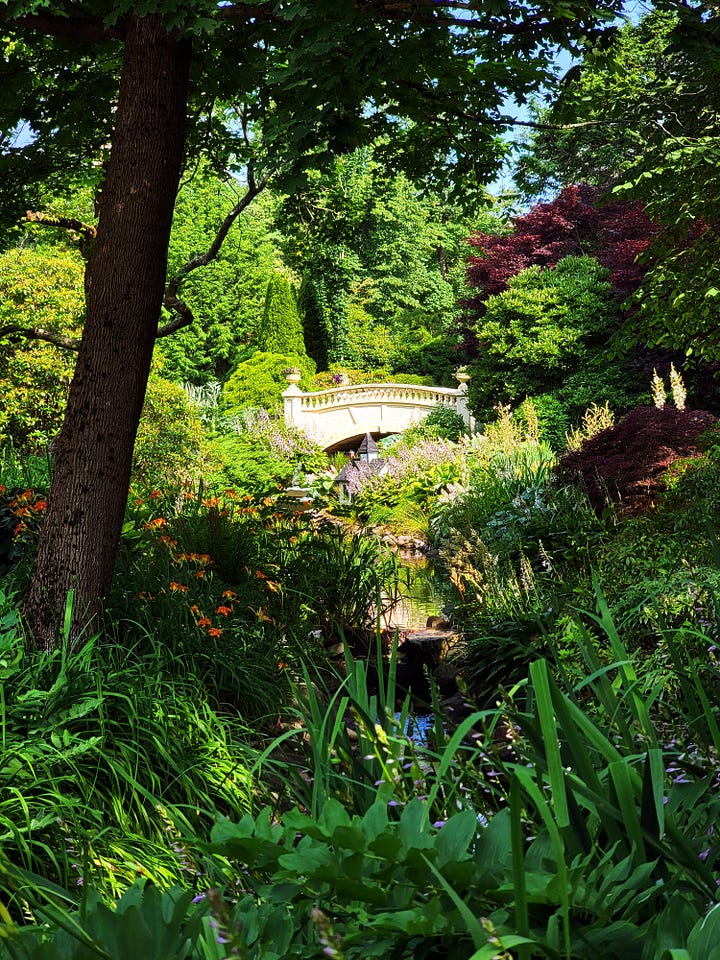
There was a curious, unsolved crime committed here in 2022. One night in late July, persons unknown hacked away at the trunks of about thirty trees, a process called “girdling,” that would eventually kill them. Who wounds a tree? Honestly.
I’m happy to report that most of the trees appear to be healing nicely. The gardens were as much culture as the boys could handle. They left in search of a game store. I headed deeper into Halifax.
A short walk from the gardens, you’ll find Fort George strategically located on the hilltop. Built in 1856 to protect British interests in the area, it has a commanding view of Halifax Harbor, which is one of the world’s largest.
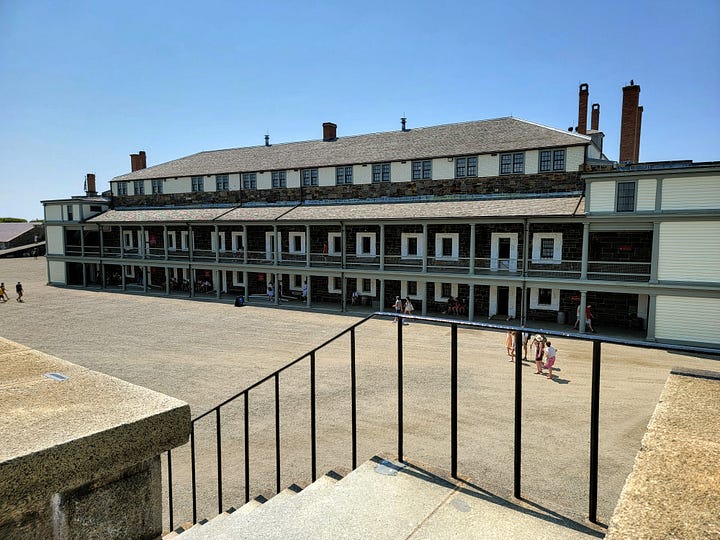

The fort is filled with re-enactors of a popular Scottish regiment that was stationed there in the nineteenth century. You can watch them execute drill formations and listen to the bagpiper. Plan for an hour at the fort to see all the rooms and exhibits regarding life there. If you’d like to see the antique canon loaded and fired as it has been done for hundreds of years, arrive before noon.
On my way back down toward the harbor, I passed the very pretty St Paul’s Anglican Church, and on a whim, ducked inside. There was an odd detail in the vestibule. About fifteen feet up, a metal rod was buried in the wall with a plaque beneath it that read “Relic of the explosion Dec 6, 1917”

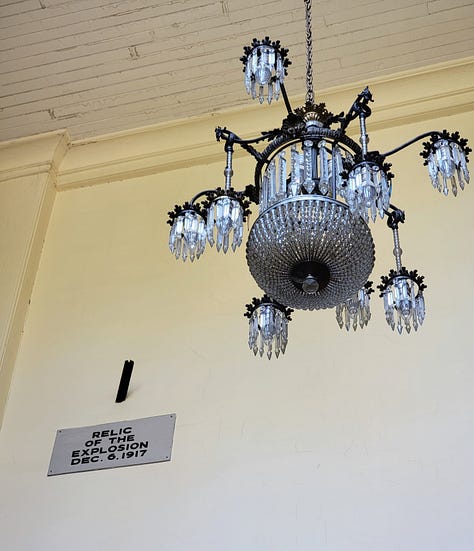
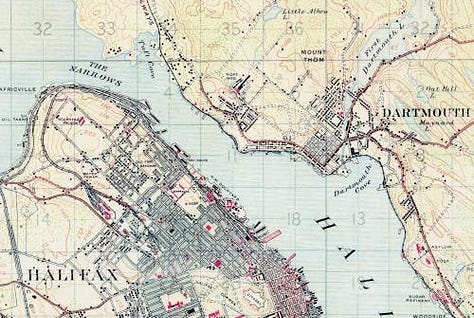
It turns out that on the morning of 6 December 1917, the Norwegian ship Imo struck the bow of the steamship Mont-Blanc in the Halifax Harbor Narrows. Mont-Blanc had been bound for the war in Europe with a cargo of explosives. Its barrels of chemicals ignited on impact and transformed the steamship into a three-kiloton bomb.
The ship exploded and jettisoned metal shards for miles, including the piece embedded in the church wall. Vaporized fuel and chemicals from the explosion coated everything with an oily film. Seventeen hundred people were killed and some nine thousand injured.
Maritime Museum of the Atlantic
If one sea disaster isn’t enough, there’s more to explore at the Maritime Museum at the harborside. Halifax has a strong connection to the Titanic in April of 1912. Many of its seamen were first responders to the wreck some 700 nautical miles away. The museum has one of the largest collections of Titanic artifacts, from beautiful hand-carved wood paneling to heartbreaking personal items like children’s shoes.
A companion visit to Fair Lawn Cemetery in the north of the city will find 121 of the recovered victims interred in graves that are arranged in the shape of a ship’s hull. You can also see the burial of the unknown child who was finally identified in 2010. Sidney Leslie Goodwin was 19 months old, the youngest of a family of eight who all perished.
My solution to sadness is always sugar. I headed back down to the boardwalk for snacks.

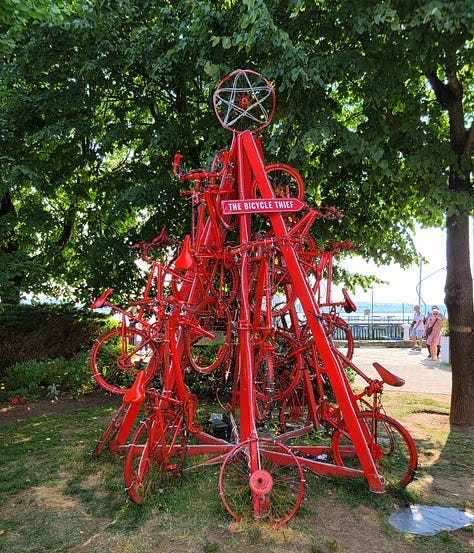

EAT
The must-eat foods in Halifax are many: donair, chowder, cold lobster rolls, Digby scallops, and deep fried pepperoni with hot or honey mustard dip to name a few.
Donair is a strange beast, but so beloved in the area. Think gyro, but instead of tzatziki on top, the sauce is made of condensed milk, vinegar, sugar, and garlic. You had me at sugar. Go to the source at King of Donair on Quinpool Road, or if you’re lucky, catch some at the food trucks by the port.
Digby Scallops from Nova Scotia are reputedly the best in the world. They’re exported the world over. Halifax is close enough that they’re peak freshness perfection. You can’t go wrong with any kind of seafood in Halifax really, including chowder, fish and chips, and lobster rolls.
I couldn’t get any fried pepperoni on my way back to the ship, but “deep fried” just about anything gets a thumbs up in my book.
Honestly, if I’d only ever made it as far as the boardwalk where the food trucks abound, eaten a basket of poutine and some Cows ice cream, and sat in the chairs in the sun, I’d have counted my visit to Halifax time well spent.
Free Reading
Check out these all genre Heartwarming Reads:
For my writing friends, check out the micro-flash contest this month on Story Street.






